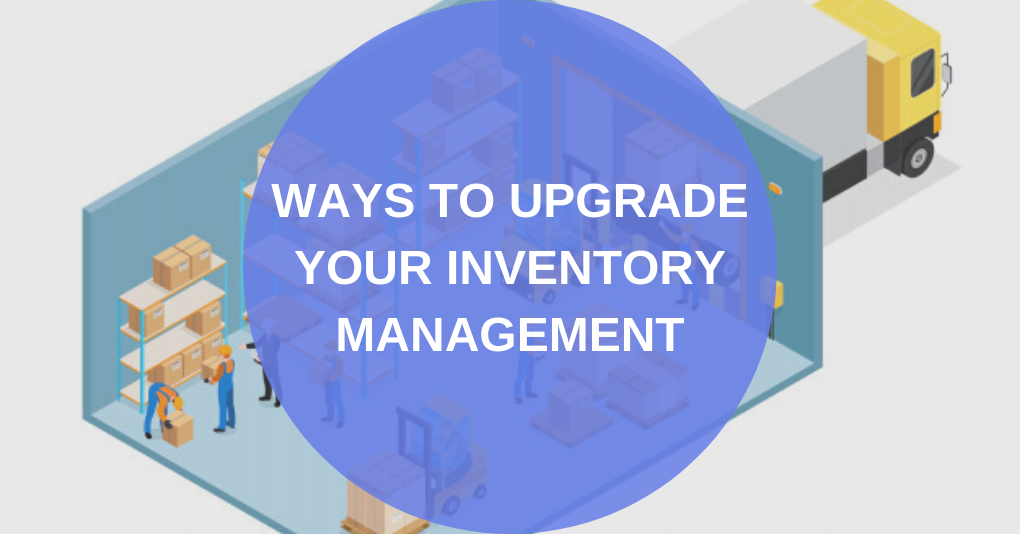Good businesses live and die by their cash flow. You need to know how much money is coming in and out of your company to adequately manage your growth. If you hold significant inventory at any given time, your cash is tied up in an illiquid investment. While you maintain consistent sales, this situation will cause no major problems.
The issue arises when you need liquidity, for example, to pay your rent, and you aren’t selling as much as you might have expected. Good inventory management practices can prevent an unforeseen cash crunch, free up time, and even save you money. Implement a system for managing your company’s inventory that allows you to keep your finger on the pulse of your stock without constantly counting it.
What is inventory management?

Inventory management describes the process of ordering, storing, and selling the physical products that belong to a given company. Depending on your business, there are many considerations to take into account when planning an inventory management system, including the size, perishability, cost, and availability of your products. If you operate several locations, your inventory management process will be all the more complicated. You might consider investing in software such as OrderCircle that automatically tracks sales and stock to help you stay on top of your inventory.
Maintaining proper inventory management techniques is even more important when you operate an e-commerce business. You need to be able to send out products as soon as they are ordered, or you risk losing credibility. An inventory management process will ensure you maintain the correct balance between sales and stock-on-hand.
How does good inventory management save money?

Any money that is tied up in physical stock cannot be used to help your company grow. By properly managing your inventory, you can optimize business development and provide the best possible customer service. Here are a few ways an inventory management process can help you save money.
- Save on storage: Any products you have on hand will have to be stored. The more stock you have, the more you pay for storage. An inventory management system ensures you never have a surplus supply, keeping costs down.
- Prevent losses: Products can become unusable or unsellable for any number of reasons. Food can be spoiled. Clothing goes out of fashion. Furniture gets damaged. By implementing an inventory management process, you can keep an eye on your stock so it gets sold before it becomes “deadstock,” which would result in a loss for your company.
- Better cash flow: If you are tracking and optimizing your inventory, you will sell more of your best products and hang on to less stock. The more products you move, the more income you make for your business. If it sits in your warehouse or store, you are losing income. While your inventory can be a proxy for money, you will find it near impossible to pay your electric bill with shoes if you don’t sell enough products for one month.
7 Inventory Management Techniques to Optimize Your Business

Every business will come up with its own unique way to manage inventory and optimize sales. However, you should create systems to minimize the potential for human error and decrease the amount of time your staff needs to spend counting and tracking your stock. These techniques will help you systematically manage your inventory so you can stop guessing when it’s time to order new stock.
- Use an ABC sorting system. There are dozens of different ways to prioritize your goods. One of these systems sorts products into three categories – A, B, and C – based on their importance for your sales. Here is how to separate your inventory into groups to optimize your stock.
- High value + low sales volume
- Moderate value + moderate sales volume
- Low value + high sales volume
This system allows you to concentrate on the products that require the most vigilance. Type A stock will demand the most attention because they have a significant financial impact on your company, but sales are irregular. Type C stock requires very little oversight; it sells itself but provides only a small amount of your company’s income. Type B inventory sits somewhere in the middle. Use these categories to optimize your supply so you can keep your most popular products on hand.
- Set a “par level” for your stock. A par level is the minimum amount of each product you need to have available at any given time. This line tells you when it is time to order more of a product. The general rule is to order just enough to make it back up to the minimum stock for that item.
The par level will always be product-specific because it depends on how quickly you can sell, as well as how long it takes to restock. This number should not be random; you should do market research and pay attention to your sales to drive the decision-making for your par level. - Stick to a “First-In-First-Out” (FIFO) rule. First-in, first-out is one of the fundamental rules of inventory management. Basically, you should sell products in the order that they arrive in your warehouse, from oldest to newest. The easiest way to ensure you follow this system is to always stock new products from the back, so the first product to leave storage will the oldest one.
This rule helps prevent the degradation of products that can happen in your warehouse or storage unit. FIFO is particularly important if you are selling food, flowers, or other perishable products. However, even if you are selling non-perishables, you should sell the oldest material first before it becomes obsolete or gets damaged. - Make a contingency plan. No matter how well you prepare your inventory management, things could always go wrong. You might miscalculate your stock or cash and not have a product when you need it or you might run out of storage space during a seasonal boom. Worst of all, your manufacturer might stop producing the item altogether.
What do you do when disaster strikes? Any good inventory management system will include a contingency plan based on potential risks in your industry. Research and consider what issues could arise and prepare responses for each situation. - Build strong relationships with suppliers. Inventory management requires you to be able to react quickly to changing situations. Whether you need more of a product at the last minute, want to make changes to an order, or need to return a poorly-selling product, having a good relationship with your suppliers will always help smooth over issues.
A strong relationship requires you and your supplier to support each other mutually. Provide them with as much information about your business and sales as you can so that they can adjust production and optimize their own companies. Negotiate deals that benefit both parties. A long-term relationship with your suppliers can get you out of a pinch if you have a problem and can help you manage your stock more efficiently. - Audit your stock regularly. Even if you are using inventory management software that is connected to your point-of-sale technology, you should manually check on your stock regularly. Many companies choose to do a manual audit (read: lots of counting) once a year to reconcile sales and warehouse information with actual stock. However, this process, called an annual physical inventory, is time-consuming and costly for many companies.
If you own a lot of inventory, it may be worth going through reconciliation processes more frequently for specific sets of items. Create auditing cycles for the best-selling items in your inventory so you can stay on top of changes or any issues that arise. You can also spot-check products individually if they sell extremely quickly or if you believe there might be a mismatch between your software and your stock. - Consider a dropshipping strategy. Dropshipping is a viable alternative to maintaining an inventory. If you use a dropshipping strategy, you act as the middleman while your supplier sends the product directly to your client every time they order. You take on none of the risks of holding a constant inventory.
Many wholesalers offer dropshipping as an option if you discuss it with them. This business model is cheap, scalable, and easy to start, but it can fail if shipments become complicated or if a customer wants to return a product. However, the business model can be an excellent way to minimize the risk connected to complex inventory management.
Do you need an inventory management software?
Inventory management is a complicated but essential aspect of any business that sells physical products online, or even offline. While you can use Excel to keep track of your stock, many sales analytics software can create inventory management systems for you. If you have an online store on Jumpseller, you can automatically track your sales and inventory to simplify your reconciliation process.
Optimizing your inventory management system can save you money, time, and hassle, especially when you are making sales across several locations. Once you have a good grasp of the flow of goods and cash in your business, you can make more informed decisions about growing your company and reduce your risk.
Best tips to manage your time and increase productivity
Mismanagement of time is a constant presence in our lives; procrastination, checking social networks at work to disconnect, perform the first tasks that come to mind without thinking if they are important or not, are some of the manifestations of poor planning.
In addition, you should set up shipping for your business. To set up shipping for your online store, start by understanding your Business Model, selecting the right shipping company and researching your target audience. This will help you keep the whole process smooth and you can keep track of everything.
Final Words
Outdated inventory management systems can easily cost you a dime and maybe more. So, it is important for your business to have an advanced inventory management software that can handle all of your needs to successfully thrive in today’s highly competitive business landscape.
This is one of the main reasons why OrderCircle is equipped with cutting edge features that help you keep your inventory management up to date. Try it yourself for free!

